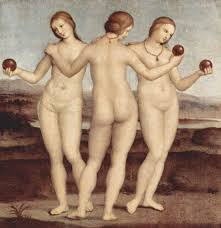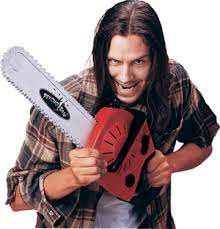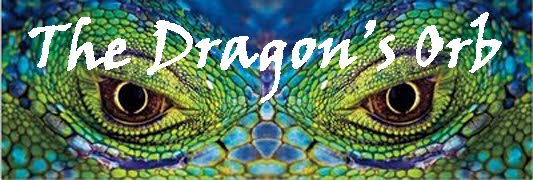Thoughtful Sensei is one of those blogs. I have heard he is a high level aikidoka from the Houston Aikibudokan. His physical art is sublime. His dojo is a work of art. He simply views the budo experience very different than I do. His blog is one of my favorites, but he walks the path in different shoes.
Thoughtful Sensei

The best way I have thought to describe the difference in attitudes is through another form of art. He is a classical painter adhering to the guide lines the classic masters have established on aesthetics.

On the other hand, I am new breed of artist. I have studiously earned my degrees in the classic arts in Japan. On the other hand, I am as comfortable making art with a brush as I am with a chain saw. I have no classic rules...I have only the passion of exploration and creation.

With that pretext, I would like to offer a sample of a recent post from Thoughtful Sensei.
"...you don't need the potential confusion and cognitive dissonance by studying two differing base philosophies at the same time. You have to fully ingrain, embed, internalize and make intuitive ONE set principles BEFORE looking at another. Once you have one set fully in your head only then can you look at other ideas and break them down, understand them and see whether or not they will improve your Aikido."
He also goes on to state that you should have a 7th dan before you consider changing an art. He also talks about studying the pasted down form so tightly that he understands the need for a blood oath, like some groups historically did in Japan.

While I am sure he is fine artist and teacher, he simply approaches the art from a different frame of mind than I do.
-Yes practice with different styles and different teachers!!!! They will shake you out of habitual patterns. Keep searching for freedom in movement rather than prescribed answers.
-Tradition is useful.... until it is not.
-You change an art the second you touch it. Copying is not art anyhow. Creation and exploration is art.
-It is impossible to have differing base philosophies in the study of Aikido. There is effective, efficient motion - or there is not.
-Kata is useful way to store ideas, but we need not over analyze them. They are palates for us to play. They should change with the seasons and our moods. Kata is not written in stone. The ideas are not passed from God. Kata was someone else's way of bucking the system and trying to play and teach in a way that spoke to them.
-"Learn the old, but know the new" is a famous phrase in Japan about studying art. The second art falls into our hands it is our role to shape it in our own vision. We need only copy the master until our training wheels can be taken off. Art is the divine act of creation. If we are not creating Aiki through creation...we are merely trying to photocopy some past masters version. We MUST internalize it and make it our own.

Thank you Thoughtful Sensei for your blog. I enjoy it immensely. I just look at the same art from a different set of eyes. I learn as much from my disagreement as I do from the artists that I agree. Hopefully soon we will share a mat, and we can harmoniously play in the art we both spend our lives chasing.







Wow 7th Dan. Considering Tomiki himself achieved 8th Dan and that was shortly before his death, that is quite a long long long time before changing an art. In fact anything above 3rd Dan is all honorary and dependent on your contribution to the overall wellbeing to an art.
ReplyDeleteThat means that you'll be welded to an art from the minute you study it.
Anyways, I'm going to peruse the different philosophies. It's also important to seek out different teachers as they will teach you things from a dissimilar light.
The Dan grade at which it becomes honorary is a style-dependent level, I'd bet. For followers of Sensei Geis' curriculum, Godan is the first for which there is no formal demonstration set out, Yondan still requires a full demonstration.
ReplyDeleteIf you are going to stick with one style and adhere to its curriculum then you can't see the forest until you see all of the trees. You need to understand the basics and how they play into the whole and it can take a while to be able to understand the ramifications of a change to one of the basic tenets of the style.
Exposing yourself to outside influences is not bad and can get you to see your chosen style from a different light, angle or perspective. Perhaps it can enhance your knowledge or give you an inspiration to explore a different approach to a problem.
But studying two approaches at one time, in my mind, could lead to confusion and slower progression.
Wait till 7th Dan?
ReplyDeleteWhy don't we just drive Model T Fords too.
Seriously, the best way to find strength and weakness in your primary art is to explore others.
I believe that arts are chasing the same thing. I did not learn Kung Fu, until I started Aikido.
ReplyDeleteBut beyond that, I train in the ideas of three very different Aikido teachers, a Judo teacher and a Daito Ryu teacher. All tackle the same idea of throwing someone down completely different....but the goal is efficient motion so really they all train in the same thing, they express different.
Would it be better for me to train with just one teacher? I personally think my path has been strengthened by being educated by so many great men.
The way the dan ranks in the Yoshinkan Aikido style I studied were laid out: at 6th dan, you earned the title Shihan and a that point you knew, understood, and could teach all of the physical techniques of the style. You could answer all the technical questions. A 7h dan is a Shihan who has matured. 8th dan connotes full mastery.
ReplyDeleteA couple of things.
ReplyDelete.
First, in response to a comment above - Tomiki Sensei recieved 8th dan from OSensei in 1942, and didn't die until 1979.
.
Second, I trained under LF Wilkinson Sensei for 4 years. While I disagree with his philosophy on this, I do understand it. While I can't speak for him, of course, my understanding of the idea (if I'm right) is that there are such specific principle concepts in this type of Tomiki aikido that it can become corrupted by outside influences - especially by those who would automatically poo-poo the Tomiki style. And double especially while the student is very new.
.
When I left his organization and began training in the Aikikai, my new dojo introduced me to a whole world of different teachers and concepts that I'd never even considered. I've learned an insane amount in less than a year.
See, here's the problem. There's a sensei who was a direct student of the Founder, running a school not three miles from LF sensei's dojo. And in four years, I never even knew that resource was available. This is a bad thing, in my (completely unqualified) opinion. I feel like we should take advantage of every opportunity to learn. I can only help us.
Talking of learning from other teachers, Sensei Strange - have you every taken a look at Ryabko Systema? Very aiki IMHO!
ReplyDeleteLF's point about a foundation is useful in terms of establishing a simple and reliable reflex that does not depend on engaging the slower conscious mind activity-- once its in place and youve got that basis covered then expanding to various and sundry else is simple and easy and useful
ReplyDelete--
as to when shu ha ri occurs for a given indvidual- i think it depends on the indvidual -- LF comes from a system that strongly enforced the idea that you shouldnt go changing stuff you havent completly understood in depth and in detail-- the good quality here is that this attitude tends not to let the transmission of the data get mucked up over time (purists and traditionalists have their place-- they preserve the meme)
with this it should be recognized that any reasonably intelligent fellow can be expected move a system toward greater complexity and violence (not tough to go in those directions),but few are endowed with the vision and wherewithal to go the other way -- in terms of shaping the art over generations the innovators of the second class are most often held up as real genius types -- the rest tend to just be viewed as cluttering stuff up and so are warned off and imbued with the preservation ethic --